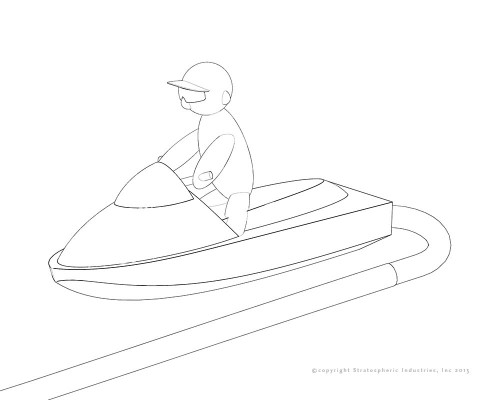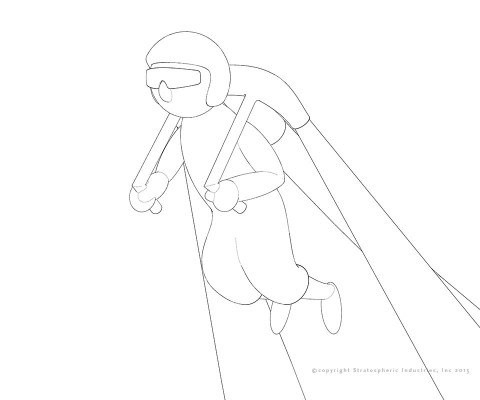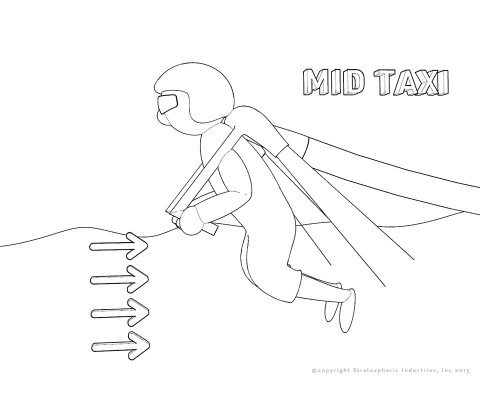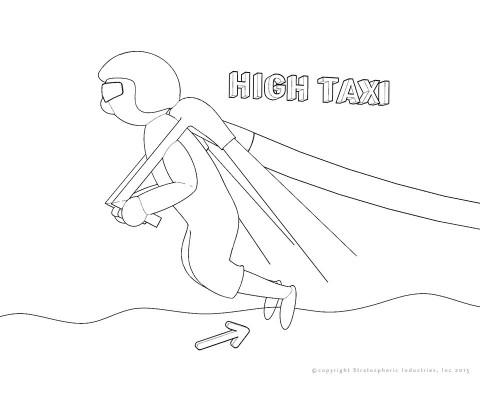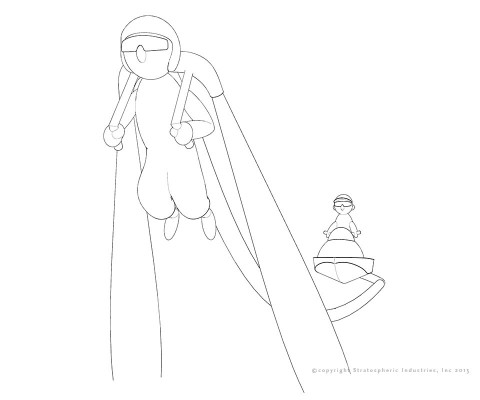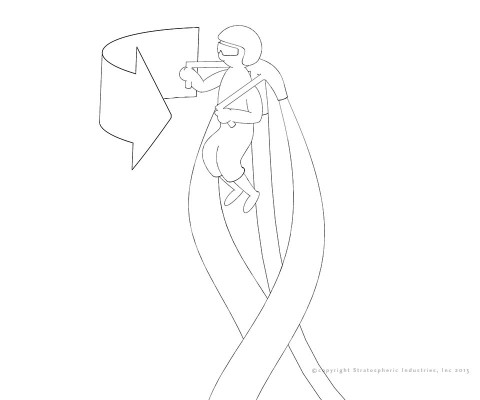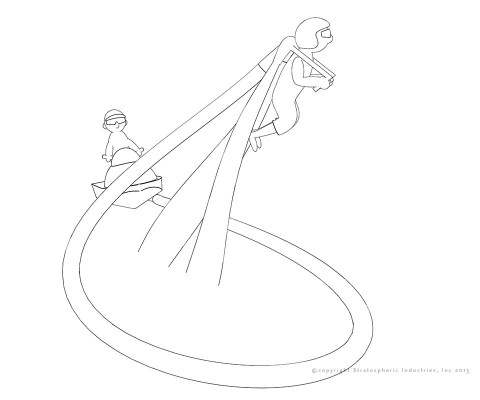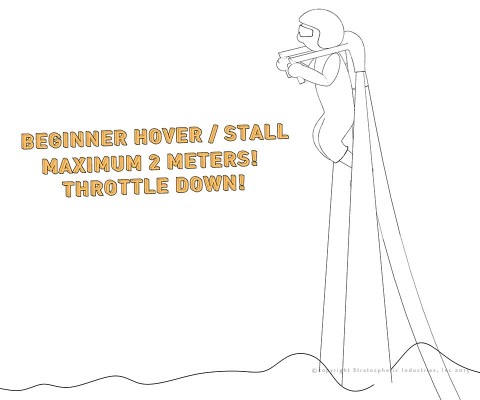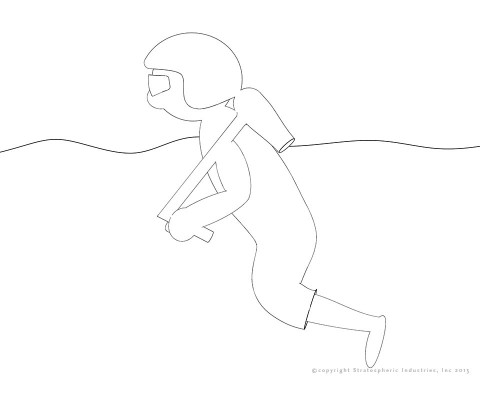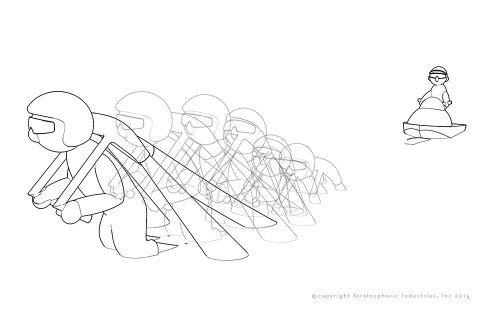These are the important concepts and illustrations for using the X-Jetpack.

Throttleman
Driver of jet ski, controlling the throttle. The person in charge and responsible for the pilot.
Pilot
Person flying the jetpack. Secured in the harness of the jetpack and directing the thrust of the jets.
Low Taxi
Chest, shoulders in water, lots of drag, no lift, drag provides stability to learn to steer. Tiring for long periods of time.
Mid Taxi
Waist, hips in water, medium drag, a little bit of lift. Drag provides stability but the pilot is learning now to control the thrust to provide lift and forward propulsion.
High Taxi
Just feet in water drag adds a small amount of stability. The pilot is controlling the thrust and has reached a "Forces in Balance" state, forward motion and the lift are in balance.
Free Flight
Pilot position where pilot is not touching water.
Bicycle Turns
Pilot using a wide angle on a turn NOT dropping their shoulder, instead using body lean and minute hand adjustments.
Yaw Turn [Advanced]
A spinning turn about the pilot's vertical axis when one control arm is positioned higher than the other while in a hover or slow forward motion. Yaw movement are cancelled out or greatly reduced when there is tension or water drag on the hose. Yaw turns are very sensitive! A beginning pilot may lose control during a yaw turn and be unable to recover directional control. Collision with the jet ski or other obstacles is possible.
Loop [ :( ]
Pilot turning 180 degrees in a circle not on yaw causing the hose to “loop” onto itself like a garden hose.
Dive Turn [ :( ]
Pilot turning so sharply and leaning into the turn so hard that the angle of the jets overcomes the force of the roll (NO RECOVERY POSSIBLE FOR NEW PILOT!)
Hover
Pilot is in a straight vertical position with the hose directly below him and no forward motion. BEGINNER: POSSIBLY DANGEROUS POSITION WHEN FEET ARE ABOVE 5 FEET OUT OF WATER!
Start Up Position
This is the command for the pilot to get into a forward leaning position.
Turtle Position
The Pilot rolls onto their back from the side allowing the flotation to keep the face and chest above water
Hose Twist – Kink
This occurs two ways, the hose loops on its self as described in a loop turn or the swivel becomes jammed and is unable to correct itself resulting in the hose being twisted eventually damaging the hose and or cutting off water supply for thrust.
Line of Sight – LOS
This is height the pilot sees, not the height we use to calculate falls or turns!
The Pop Up
The Pop-Up is learning to use the throttle fast enough to get the pilot lifted to mid taxi at start-up. This should be a quick gentle pull immediately after starting the vessel. This should have the pilot in the mid-taxi position within 6 (hose fill for 3 seconds and 3 seconds to mid taxi) seconds of start up without flinging the pilot out of the water!.
